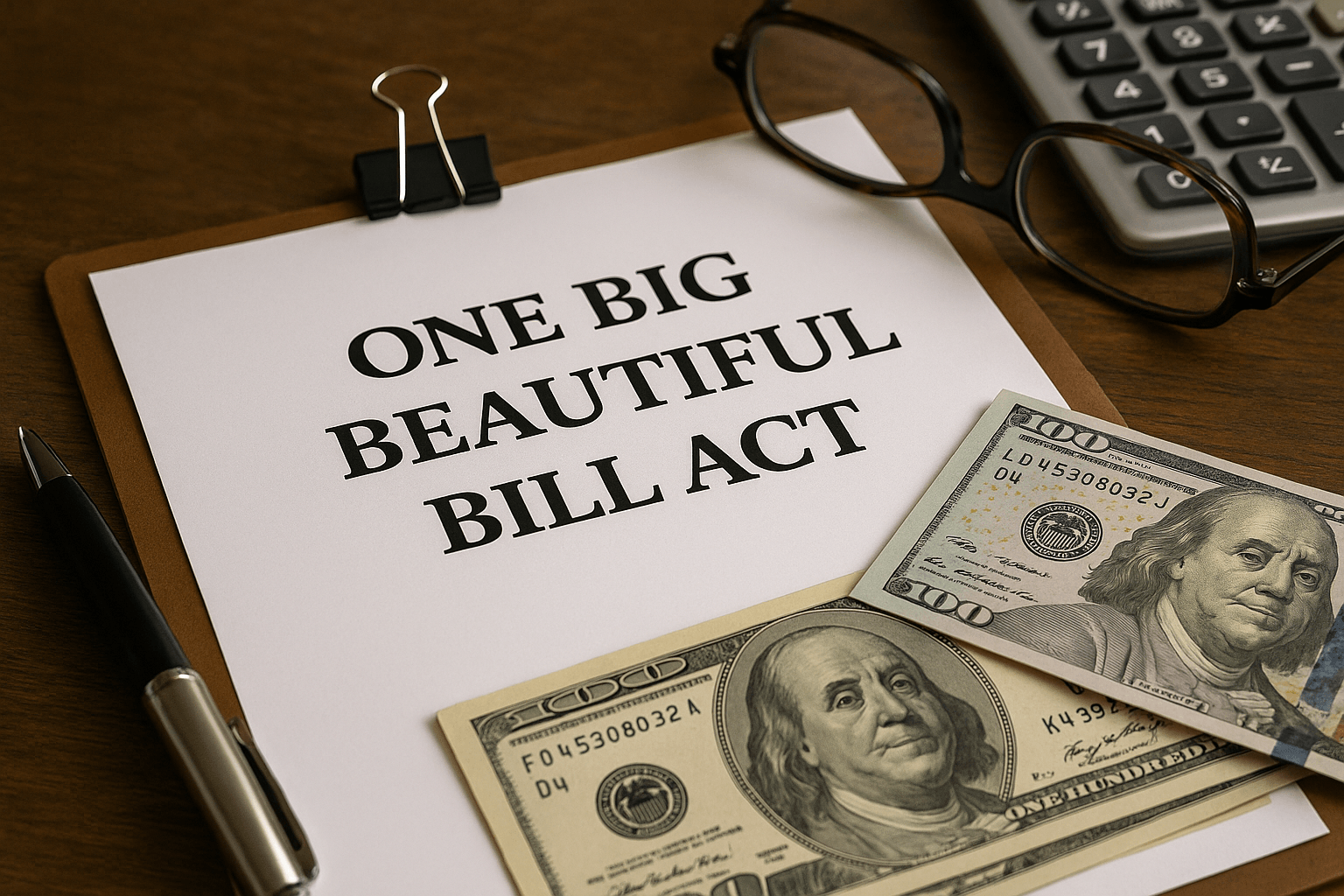
Navigating Your Finances: What Is the One Big Beautiful Bill Act (OBBBA) and How Will It Affect Your Tax Deductions?
Alex Howard
Approximately 5 minutes min read • Oct 27, 2025
What Is the One Big Beautiful Bill Act (OBBBA)?
OBBBA is a comprehensive legislative vehicle that:
- Extends Individual Tax Cuts
- Permanently preserves the lower tax rates and higher standard deduction established by the 2017 TCJA (originally set to sunset after 2025).
- Introduces Targeted, Temporary Deductions
- New write-offs for tipped workers, overtime pay, and auto loan interest, available for the 2025 and 2026 tax years only.
- Adjusts Social Safety Net Programs
- Implements work requirements and funding shifts for Medicaid and SNAP, reducing some federal outlays.
- Boosts Estate and Gift Tax Exemptions
- Permanently raises the lifetime exclusion amount, easing estate-planning burdens for high-net-worth individuals.
- Revises Energy Tax Credits
- Phases out select clean-energy incentives from the Inflation Reduction Act, while maintaining some fossil-fuel credits.
While touted for its tax relief, critics warn that OBBBA could add over $2 trillion to the national debt over the next decade and unevenly benefit higher-income taxpayers.
How OBBBA Affects Your Tax Deductions
For business owners earning over $250,000 annually and for seniors, these are the standout changes:
1. Permanent Extension of TCJA Benefits
By making lower tax brackets and the increased standard deduction permanent, OBBBA delivers certainty.
- Higher Standard Deduction:
- Single filers: $13,850 (2025)
- Married filing jointly: $27,700 (2025)
- Impact: Retirees drawing from IRAs or 401(k)s benefit from a larger deduction cushion, potentially reducing taxable income and deferring taxes.
2. Senior-Specific Deduction Boost
OBBBA adds a $4,000 – $6,000 deduction for taxpayers aged 65 and older.
- Application: Automatically applies when you claim the standard deduction—no extra forms required.
- Limitation: High-income seniors may see phase-outs; consult IRS tables to determine eligibility.
3. Qualified Business Income (QBI) – Watch the Sunset
The 20% QBI deduction for pass-through entities remains intact through 2025, but OBBBA does not explicitly extend it beyond 2025.
- Action Item: If you rely on Section 199A, monitor Congressional action late in 2025 to avoid surprises.
4. New Temporary Deductions
For tax years 2025 and 2026, you can deduct:
- Auto Loan Interest (up to $1,000)
- Overtime Pay Expenses (employer-paid in certain industries)
- Tipped Income Costs (for employers in hospitality)
- These carve-outs offer modest savings but require careful documentation.
Broader Impacts on Retirement and Senior Finances
Even beyond direct deductions, OBBBA’s wider provisions ripple through retirement planning:
- Social Security Trust Fund Solvency
- The shift from taxing benefits to offering a capped senior deduction may accelerate insolvency from 2033 to 2032, potentially triggering a ~24% benefit cut when reserves run dry.
- Healthcare Cost Shifts
- Medicaid work requirements and budget cuts could push more healthcare expenses onto seniors, eroding retirement nest eggs and increasing out-of-pocket spending.
- Future Pension Adjustments
- Mounting federal deficits heighten the risk of reduced cost-of-living adjustments for Social Security and certain public pension plans.
Key Takeaways
- Permanent Savings: Lock in lower tax rates and a higher standard deduction indefinitely.
- Senior Boost: Extra $4K–$6K deduction for age 65+ filers.
- QBI Watch: The 20% pass-through deduction sunsets after 2025 unless renewed.
- Temporary Breaks: New auto-loan, overtime, and tipped-income deductions for two years.
- Plan Holistically: Expect tighter safety nets—factor healthcare and potential Social Security changes into your long-term budget.
Next Steps: Given the complexity and phased expirations, partnering with a qualified tax advisor is critical. They can tailor strategies—maximizing current benefits, preparing for QBI’s sunset, and safeguarding your retirement assets in an evolving legislative landscape.